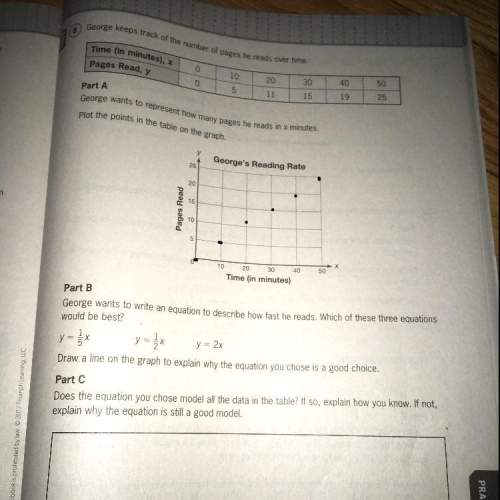
Mathematics, 30.03.2020 22:45 fernandoluvsmom
A random sample of 150 men found that 88 of the men excercise regularly, while a random sample 200 women found that 130 of the women exercise regularly. A friend says that she believes that a higher proportion of women then men exercise regularly. Write hypotheses that you could use to test your friend's belief. (Be sure to define the parameters referred to in the hypotheses.) Do not actually perform the test. ONLY write the hypotheses.

Answers: 2


Other questions on the subject: Mathematics

Mathematics, 21.06.2019 13:30, SenpaiTaii
Which statement holds true for absolute value functions? •the absolute value determines the direction in which theb. the coefficient determines the line along which the graph, the distance between the left and the right arm is based od. the vertex coordinates and the absolute value determine 111
Answers: 3

Mathematics, 21.06.2019 14:50, natalie2sheffield
Simplify 4 square root of 2 end root plus 7 square root of 2 end root minus 3 square root of 2 . (1 point) 2 square root of 8 8 square root of 2 8 square root of 6 6 square root of 8
Answers: 1

Mathematics, 21.06.2019 19:00, carterkelley12oz0kp1
This task builds on important concepts you've learned in this unit and allows you to apply those concepts to a variety of situations. the task has several parts, each in its own section. mr. hill's seventh grade math class has been learning about random sampling and how it tends to produce samples that are representative of an entire population. they've also learned that if a sample is representative of the entire population, then estimates or predictions made based on the sample usually apply to the population as well. today, in class, they are also learning about variation in random sampling. that, although predictions and estimates about the population can be made from a random sample, different random samples will often produce slightly different predictions or estimates. to demonstrate this concept to his students, mr. hill is going to use simulation. he begins the lesson by explaining to the class that a certain university in the united states has a student enrollment of 19,100. mr. hill knows the percentage of students that are male and the percentage of students that are female. using simulation and random sampling, he wants his seventh grade students to estimate both the percentage of male students and the number of male students that are enrolled in this university. to conduct the simulation, mr. hill has placed one hundred colored chips in a bag, using the appropriate percentages of enrolled male and female university students. red chips represent males, and yellow chips represent females. each seventh grade student will randomly select twenty chips, record the colors they selected, and put the chips back in the bag. at this point, each seventh grade student will only know the results of their own random sample. before you begin, it's a good idea to look over each part to get oriented to the whole task. additionally, it's best to complete the sections in order, since they build on each other. finally, the work you complete will be a combination of computer-graded problems and written work that your teacher will grade. in some cases, you will need to complete work outside of the problem (in a word processing document or on paper, for example) and upload it for grading. to get started click work on questions. questions: 1. suppose a student reaches in the bag and randomly selects nine red chips and eleven yellow chips. based on this sample, what is a good estimate for the percentage of enrolled university students that are male? 2. suppose a student reaches in the bag and randomly selects nine red chips and eleven yellow chips. based on this sample, what is a good estimate for the number of enrolled university students that are male? 3. suppose a different student reaches in the bag, randomly selects their twenty chips, and estimates that 60% of the students are male. how many yellow chips were in their sample? 4. suppose a different student reaches in the bag, randomly selects their twenty chips, and estimates that 60% of the students are male. based on this sample, what is a good estimate for the number of enrolled university students that are female? 5. based on your dot plot, make a new estimate of both the percentage and number of males that attend this university. use complete sentences in your answer and explain your reasoning. 6. compare your estimates for the percentage of male university students from part a and part b. which estimate do you think is more representative of the population? use complete sentences in your answer and explain your reasoning. 7. once you have created both sets of numbers, complete the following tasks. in each task, make sure to clearly label which set you are identifying or describing. identify the elements of each set that you created. calculate the mean of each set. show your work in your answer. calculate the mean absolute deviation of each set. show your work in your answer. describe the process you used to create your sets of numbers under the given conditions.
Answers: 1
You know the right answer?
A random sample of 150 men found that 88 of the men excercise regularly, while a random sample 200 w...
Questions in other subjects:


Mathematics, 14.01.2021 01:10

Mathematics, 14.01.2021 01:10


Mathematics, 14.01.2021 01:10


Spanish, 14.01.2021 01:10


Social Studies, 14.01.2021 01:10

Mathematics, 14.01.2021 01:10

 .
. .
.


 .
. .
.




